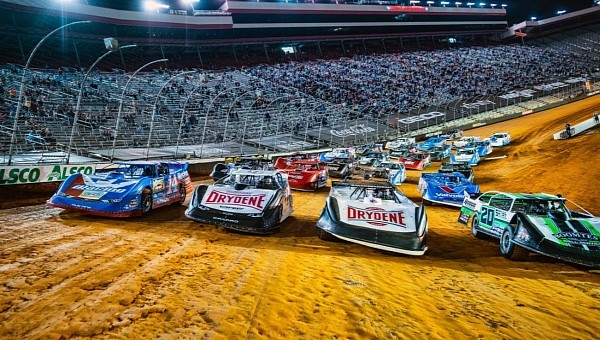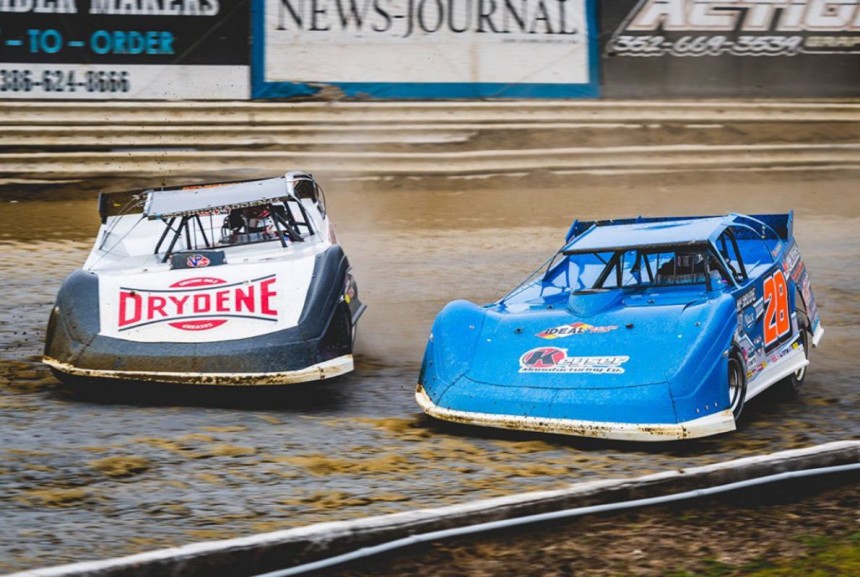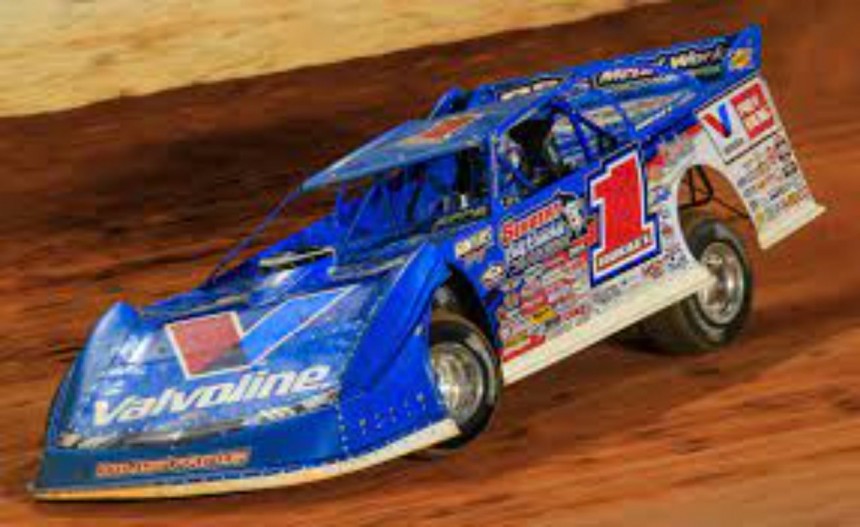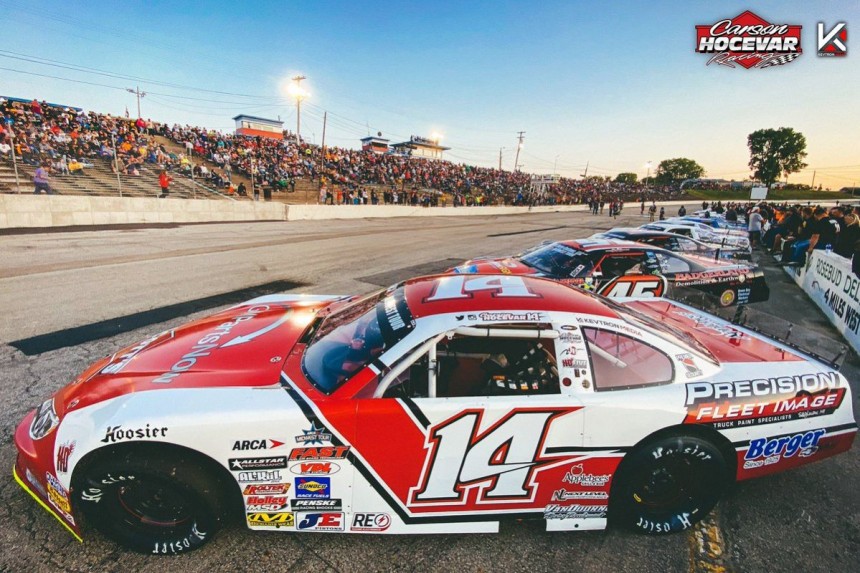If you have watched at least some auto racing in North America, then you have inevitably seen some low-riding super aerodynamic cars going around a short track somewhere in a state.
These four-wheeled speed demons are called late models because they are the latest models of cars like the Camaro, Mustang, and so on. However, they don't look like any street car or NASCAR stock vehicles, so what is up with them?
Late-model racing has existed since the first cars were created. Since the late 18th century and the early 19th century, everybody wants to see the latest and most excellent cars run against each other to determine which one is better. However, as far as the world of NASCAR stock competition is concerned, late model racing made its official debut in the summer of 1949, with the very first NASCAR strictly stock race.
The modified division of the official competition existed since 1948, but that particular category ran older pre-World War II vehicles that had been heavily modified for racing. The strictly stock division was different because the set of rules mandated that all entrants had to run a car from the current model year or the last two years. This category would go on to become the NASCAR Cup Series today, and all throughout the 20th century, promo material called these cars late models. Even today, you can still hear this expression from some older commentators.
However, this is not quite right because these late models were 'created' on local short-track races. When NASCAR wasn't hosting a primary league race at one of the hundreds of tracks they went to over the decades, individual track owners were doing everything in their power to host weekly races to keep the lights on. Seeing the interest in NASCAR, they also began hosting late-model races with rules that were nearly identical to the primary and more important motorsport competition. Besides, it was not unusual and uncommon to see a big NASCAR superstar do a big league event and then go to some local short track and race there with the exact same car the following day.
However, as the economy geared up in the 1950s, buying the newest car every two years just to bust it up at the local shore track was becoming far too costly. Vehicles were no longer family wagons used only for shopping or driving kids to schools. They were now luxury items and symbols of personal wealth. Even considering inflation, the price of cars was becoming too much for the average local citizen to buy and race them around for fun.
Still, someone had a very interesting idea right about that time. Imagine finding a brand-new car that's broken down, buying only the body, hanging it on an older car's frame, and racing that. Purely genial but very illegal. By the mid-1960s, all attempts to stop it were for nothing, as even NASCAR started allowing teams to put together purpose-built racing chassis and then fit new car bodies on top of them. It made the vehicles faster, improved safety, and pretty much completely kneecapped the concept as a cost-cutting measure as local late-model racers began buying or building their own racing chassis. As the 1970s continued on, costs continued to mount for late models on asphalt and dirt. While dirt late models went off and did their own thing, a 'king of the asphalt' had already emerged. We are talking about the one and only Dick Trickle.
Trickle didn't have only the clout, money, and talent to show up to every primary league model race in the country and win but an insane work ethic to boot. He wouldn't race once or twice a week. He would show up to as many as four or five events per week. If there was a late model show going on somewhere, that was paying good money, and he thought he had any chance of getting there by the time the grid was forming, he would be there.
In 1972 alone, he won 67 features, and through the sheer volume of prizes from victories, he was likely making more money than Richard Petty during this time. Dick Trickle came from poverty, having grown up in a farming community. As a kid, he would take any job he could get, making money here and there. By the time he was 15, he had saved enough money to build his first race car. As he climbed his way up through the lower divisions of the short-track scenes, he kept building up and never slowing down. In the end, after 20 years, he became the grand master of short-track racing after a lot, and I mean a lot, of hard work.
However, his tear through the ranks had left everybody else attempting to beat him by outspending him. By the time the late 1970s came around, costs were so out of control that a strange scenario had occurred. Guys had cars, but they were so expensive they stopped showing up to small events, keeping their vehicles ready for the big races.
Car counts at local short tracks continued to drop, and it became apparent that someone somewhere had to do something. The president and owner of Old Dominion Speedway in Manassas, Virginia, (Dickie Gore) called a meeting between his top competitors prior to the 1978 season. They tried to come up with a new rule set to cap costs. As a result, they decided to use as many stock parts as possible bought straight from the factory. All of these, including the price of a power unit, would cost you around $4,000, a little more than half of what big late models were going for. As a result, the late model stock was born.
In the very first race Gore held under the late model stock rules set, he had just five cars show up. Still, by the end of 78, he had 11 cars consistently showing up and paying entry fees. A few years later, it was the most significant division at Old Dominion Speedway, so the growth was incredibly fast. After that, NASCAR recognized it as an official division.
Nowadays, when you go to a short-track event, you will see the late model stocks. However, some guys still wanted to go absolutely crazy and see how far they could go. With a lot of money from corporate sponsors going into the NASCAR competition from the highest division to the lowest, some people had the funds to do some seriously insane stuff, and that's how the term super late model appeared. These things looked like something from another planet and were extremely fast. Many people, from engineers to race drivers, helped the super late models become very popular.
However, mass production was on the way. By the time the 1990s came around, anybody who wanted to purchase late-model parts could do it from verified suppliers who made sure to obey a strict template. Eventually, there were three main late-model divisions. We are talking about limited late models, which had less horsepower, late model stock, and super late model, where cars had more aerodynamically aggressive and lighter bodies plus more horsepower. Besides, super-late models have looser rules, so innovation is still possible in that division.
However, that was still not enough because, in the 1980s, the late outlaw model made its way. With almost no rules, as the single one teams had to follow was that the body be comprised of four contiguous pieces of sheet metal, with two on the sides, one in the front, and one in the back. In addition, there was another one called the winged outlaw, but that was just super insane because it basically meant having a giant billboard strapped on top of a race car.
Since the 1970s, late-model racing has become the starting point for just about anybody looking to get to the top division of NASCAR. Even now, the future stars of NASCAR are now somewhere in America, tuning up their late models for a showdown.
Late-model racing has existed since the first cars were created. Since the late 18th century and the early 19th century, everybody wants to see the latest and most excellent cars run against each other to determine which one is better. However, as far as the world of NASCAR stock competition is concerned, late model racing made its official debut in the summer of 1949, with the very first NASCAR strictly stock race.
The modified division of the official competition existed since 1948, but that particular category ran older pre-World War II vehicles that had been heavily modified for racing. The strictly stock division was different because the set of rules mandated that all entrants had to run a car from the current model year or the last two years. This category would go on to become the NASCAR Cup Series today, and all throughout the 20th century, promo material called these cars late models. Even today, you can still hear this expression from some older commentators.
However, this is not quite right because these late models were 'created' on local short-track races. When NASCAR wasn't hosting a primary league race at one of the hundreds of tracks they went to over the decades, individual track owners were doing everything in their power to host weekly races to keep the lights on. Seeing the interest in NASCAR, they also began hosting late-model races with rules that were nearly identical to the primary and more important motorsport competition. Besides, it was not unusual and uncommon to see a big NASCAR superstar do a big league event and then go to some local short track and race there with the exact same car the following day.
Still, someone had a very interesting idea right about that time. Imagine finding a brand-new car that's broken down, buying only the body, hanging it on an older car's frame, and racing that. Purely genial but very illegal. By the mid-1960s, all attempts to stop it were for nothing, as even NASCAR started allowing teams to put together purpose-built racing chassis and then fit new car bodies on top of them. It made the vehicles faster, improved safety, and pretty much completely kneecapped the concept as a cost-cutting measure as local late-model racers began buying or building their own racing chassis. As the 1970s continued on, costs continued to mount for late models on asphalt and dirt. While dirt late models went off and did their own thing, a 'king of the asphalt' had already emerged. We are talking about the one and only Dick Trickle.
Trickle didn't have only the clout, money, and talent to show up to every primary league model race in the country and win but an insane work ethic to boot. He wouldn't race once or twice a week. He would show up to as many as four or five events per week. If there was a late model show going on somewhere, that was paying good money, and he thought he had any chance of getting there by the time the grid was forming, he would be there.
In 1972 alone, he won 67 features, and through the sheer volume of prizes from victories, he was likely making more money than Richard Petty during this time. Dick Trickle came from poverty, having grown up in a farming community. As a kid, he would take any job he could get, making money here and there. By the time he was 15, he had saved enough money to build his first race car. As he climbed his way up through the lower divisions of the short-track scenes, he kept building up and never slowing down. In the end, after 20 years, he became the grand master of short-track racing after a lot, and I mean a lot, of hard work.
Car counts at local short tracks continued to drop, and it became apparent that someone somewhere had to do something. The president and owner of Old Dominion Speedway in Manassas, Virginia, (Dickie Gore) called a meeting between his top competitors prior to the 1978 season. They tried to come up with a new rule set to cap costs. As a result, they decided to use as many stock parts as possible bought straight from the factory. All of these, including the price of a power unit, would cost you around $4,000, a little more than half of what big late models were going for. As a result, the late model stock was born.
In the very first race Gore held under the late model stock rules set, he had just five cars show up. Still, by the end of 78, he had 11 cars consistently showing up and paying entry fees. A few years later, it was the most significant division at Old Dominion Speedway, so the growth was incredibly fast. After that, NASCAR recognized it as an official division.
Nowadays, when you go to a short-track event, you will see the late model stocks. However, some guys still wanted to go absolutely crazy and see how far they could go. With a lot of money from corporate sponsors going into the NASCAR competition from the highest division to the lowest, some people had the funds to do some seriously insane stuff, and that's how the term super late model appeared. These things looked like something from another planet and were extremely fast. Many people, from engineers to race drivers, helped the super late models become very popular.
However, that was still not enough because, in the 1980s, the late outlaw model made its way. With almost no rules, as the single one teams had to follow was that the body be comprised of four contiguous pieces of sheet metal, with two on the sides, one in the front, and one in the back. In addition, there was another one called the winged outlaw, but that was just super insane because it basically meant having a giant billboard strapped on top of a race car.
Since the 1970s, late-model racing has become the starting point for just about anybody looking to get to the top division of NASCAR. Even now, the future stars of NASCAR are now somewhere in America, tuning up their late models for a showdown.














